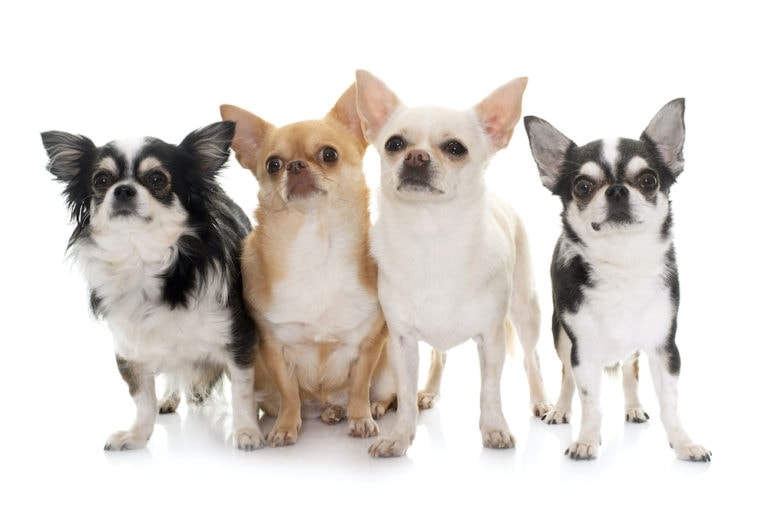There are dog breeds whose coat color variants you can count on one hand, but not the Chihuahua. The AKC lists 30 Chihuahua coat colors and 11 patterns and states that all solid, splashed, or marked coat colors are admissible. The World Canine Organization (FCI) excludes only the merle Chihuahua coat.
Chihuahuas come in either long or short coats. Fawn, cream, and red are among the breed’s most common coat colors while solid white, solid black, brindle, and merle are the rarest colors and patterns of this breed. Your Chihuahua may also come with a black or blue mask.
Whichever coat type or coat color and pattern your little furry friend may adorn, you are assured of a charming and friendly pet as this is in the nature of this breed. We tell you about 37 of the Chihuahua’s coat colors and patterns that together with the tiny dog’s ‘big-dog attitude’ make your Chihuahua pup adorable.
37. Short-Haired Chihuahua
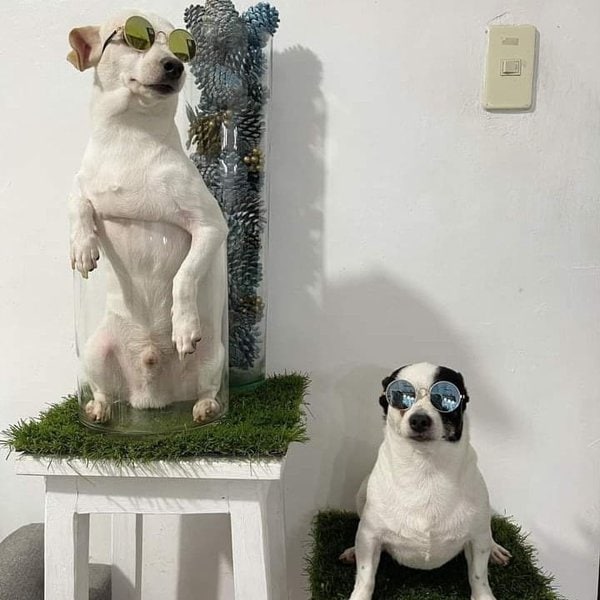
The Chihuahua with short hair is also described as smooth-haired or smooth coat Chihuahua. This coat has a glossy look and soft texture. The coat lies close throughout the body, but heavier variants with an undercoat are permissible.
The short-haired Chihuahua can have sparse longer hairs on the neck and tail. Scantier hairs may also be found on the belly, throat, face, head, and ears. If they have an undercoat, short-haired Chihuahuas tend to have somewhat longer fur.
36. Long-Haired Chihuahua
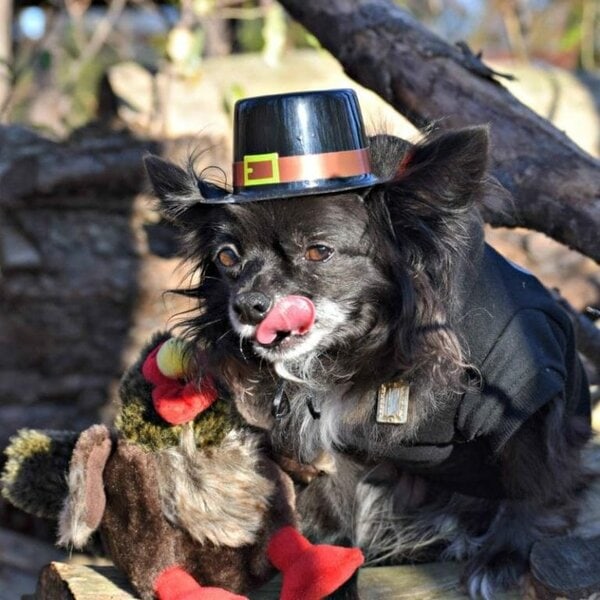
Long-coat or long-haired Chihuahuas have fine and silky hair that could be smooth or slightly wavy. Undercoats in this coat length are preferred but should not be too thick.
The long hair of the Chihuahua forms feathering on the rear of both hind and front legs, on the ears and neck, and on the tail and feet. The tail should be full and long.
Long coats that have a billowing look or thin hair that tends towards bareness are considered a fault.
35. Black Mask Chihuahua

Black mask Chihuahuas have a rare black coloring that extends from the muzzle to the eyes, forming a mask. Black masks on dogs are visible on brighter coats like fawn, though they can be present but hidden in black coat dogs.
The black mask allele (Em) in the Extension (E) locus causes the black mask variant and is usually dominant over the other alleles in this locus, meaning it can be expressed in any allele combination within the E locus.
34. Blue Mask Chihuahua
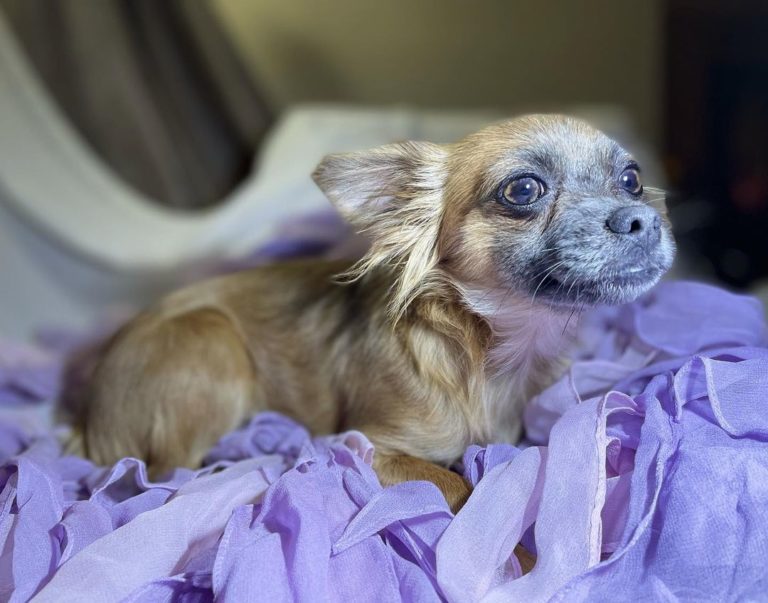
Another of the E locus expressions on a dog’s coat. Just like the black mask, the blue-mask Chihuahua is a rare feature and is caused by the same allele (Em). The only difference is that the dilution gene acts on the mask just like it does on the rest of the Chihuahua’s coat. And the E allele determines the distribution of the diluted Eumelanin pigment.
As with black masks, blue masks will only be expressed on other colors but a blue coat, even though the blue mask may be underlying in all-blue dogs.
33. Jet Black Chihuahua
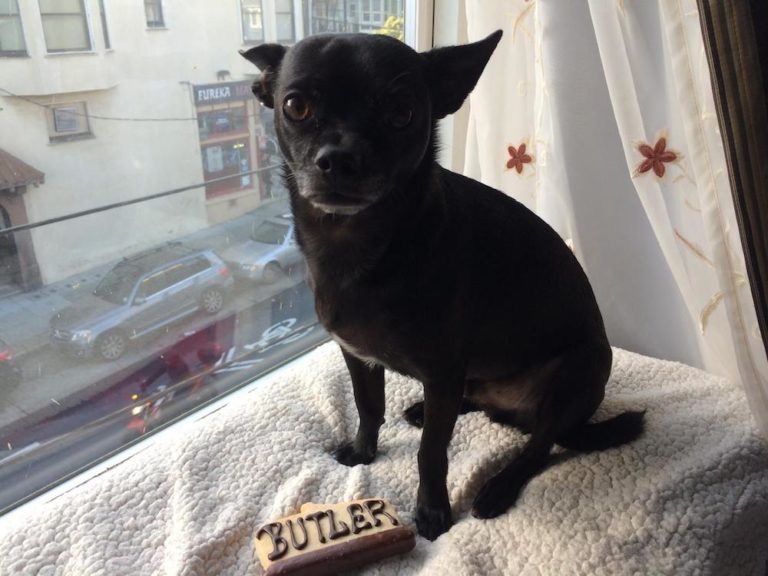
Although black is the basic coat color for a lot of other Chihuahua coat colors, a full body jet black coat with no markings is very rare in these tiny dogs. Most black Chihuahuas will have some white or other color makings or splashes on their coat.
When they do come, all-black Chihuahuas have the Dominant Black (K) gene and the Eumelanin pigment is expressed full range on their coat. The muzzle and eyes of a black Chihuahuas are also black.
32. Black & Tan Chihuahua
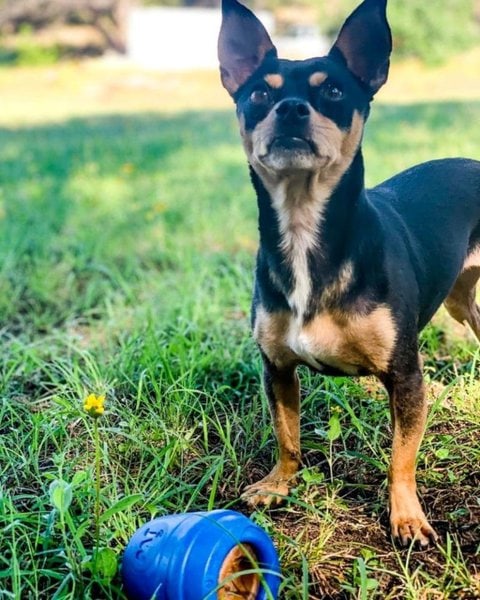
The tan-black combo in Chihuahuas often comes with a white marking on the chest that creates a tricolor coat. The black & tan combination is especially attractive on the short coat Chihuahua where it can be clearly noticed.
Black & tan is rare in Chihuahuas as in other dogs because tan markings are only present in dogs that carry a double non-black allele (kyky) in the K locus and have at least one tan-point allele (at) in the Agouti (A) locus.
31. Black & Red Chihuahua
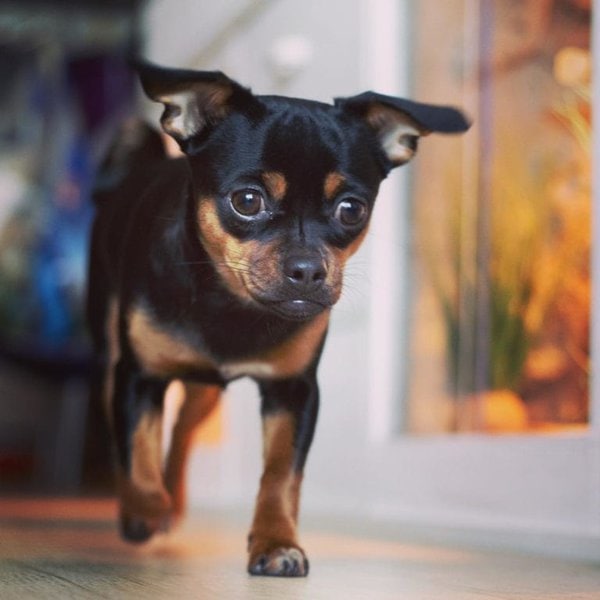
Black & red Chihuahuas adorn the colors of the two basic dog coat pigments: Eumelanin (black) and Pheomelanin (red).
A Chihuahua with a black & red coat will show a darker shade of red when compared to the black & tan combination.
While the tan results from a double tan gene in the Agouti allele, the red results from the interaction of the Dominant Black with the allele for red (e) in the E locus.
30. Black & Silver Chihuahua
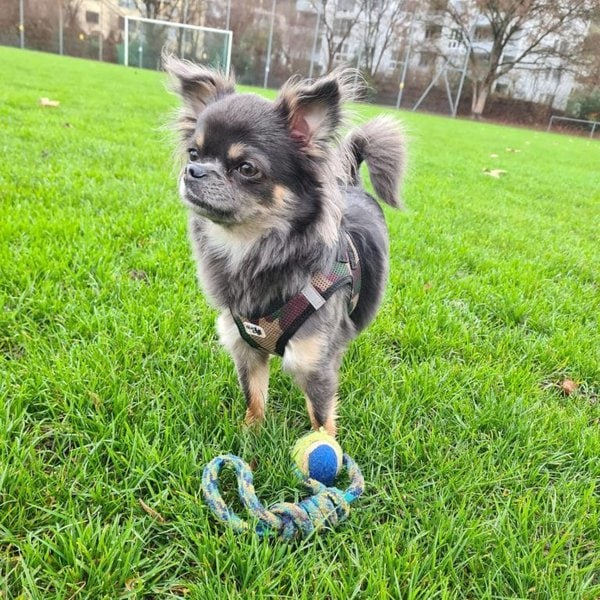
The silver color on dog coats is a dilution of the black pigment, just like gray and blue. But compared to the other two colors, silver has a lighter intensity and a brighter sheen that tends towards white while gray tends towards blue and blue towards black.
The black & silver combination is rare in Chihuahuas. The silver usually presents on the chest and tummy, on the ears, and on the muzzle.
29. Black & White Chihuahua

Black & white combinations are among the common colors in dog breeds. In Chihuahuas, the combination may vary from a bit of white on the chest to larger white patterns on other parts of the body.
The genetics of black & white dog coats are easy to explain: while the Eumelanin pigment is expressed in the black parts of your Chihuahua’s coat, the white parts are completely lacking coat color pigmentation.
Black and white dogs will have a black muzzle, eyes, and eye rims as the black pigment acts on these points.
28. Black & Fawn Chihuahua
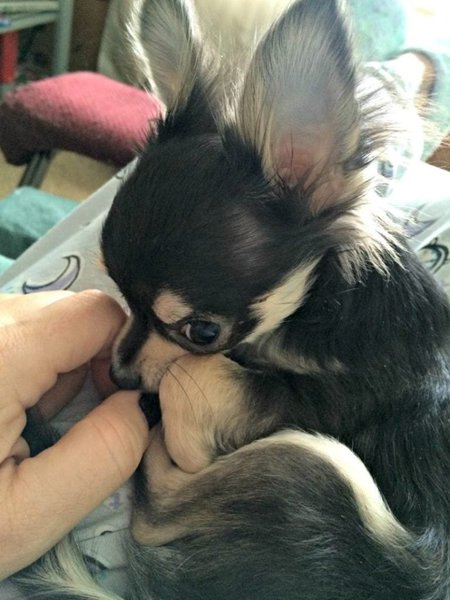
The Ay allele is one of the four alleles of the Agouti gene and is responsible for the fawn color in dogs.
Dogs will only express the A locus if the e and KB alleles in the respective Extension and Dominant Black genes are absent.
As such, the black in the Black & Fawn Chihuahua is an expression of the recessive black (a) allele within the A locus, also responsible for the black in sable dogs.
27. Blue Chihuahua
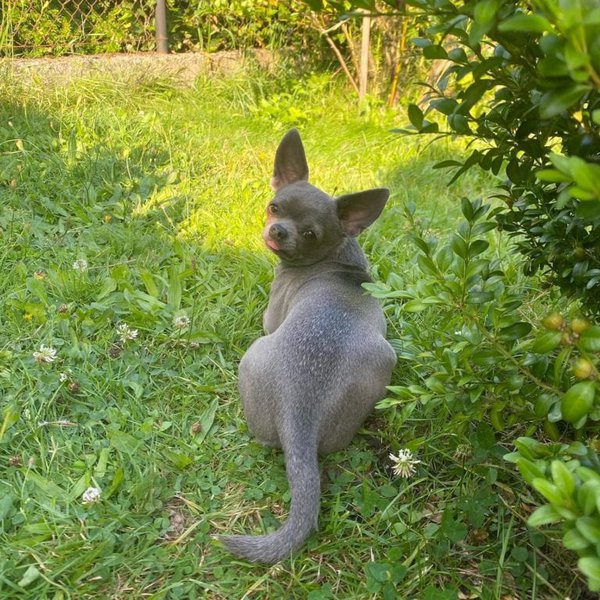
The blue color on a Chihuahua coat is a dilution of the black. It can vary in intensity from a dark to a lighter blue but is always distinct from gray and silver, which are other shades of the black color dilution.
Generally, dogs with blue coats also have blue points (nose, eyes, eye rims, and paws). And even though these points may appear black, they will reveal the blue tint at a closer look.
26. Blue & White Chihuahua
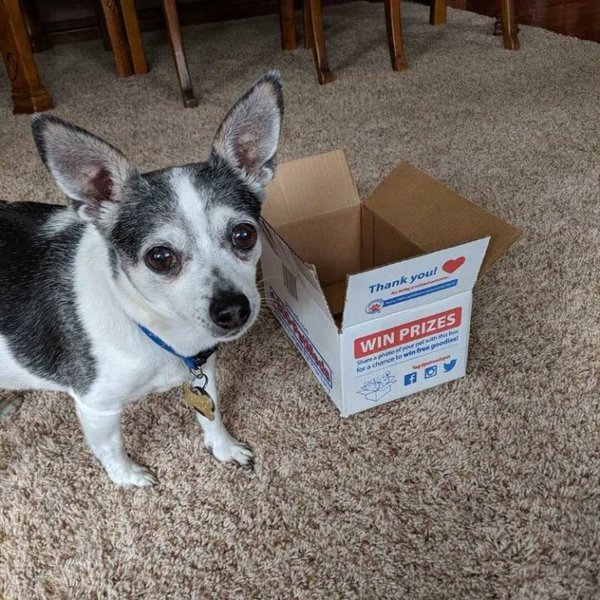
A blue & white Chihuahua has the action of the dilution allele in the D (dilute) locus working on black to cause the blue parts of the coat while pigmentation cells are completely lacking on the white parts.
The white parts may vary from tiny patches on the neck, face, and paws to extensive parts of white that may cover part of the muzzle and face and extend from the neck to the abdomen and feet, as in the case of the featured Chihuahua.
25. Blue & Fawn Chihuahua
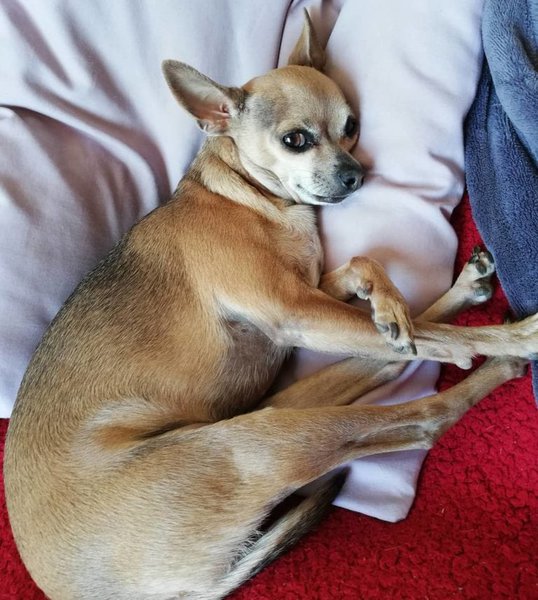
Chihuahuas with a blue & fawn coat have a basic fawn color with a tinge of blue on the hairs. The blue shade is usually more visible on the back, around the muzzle, and on the eye rims.
Since blue is a dilution of the black color, the intensity of the blue hairs will depend on the extent of the dilution. The nose of a blue & fawn Chihuahuas may appear black, but it is usually dark blue.
24. Blue & Tan Chihuahua
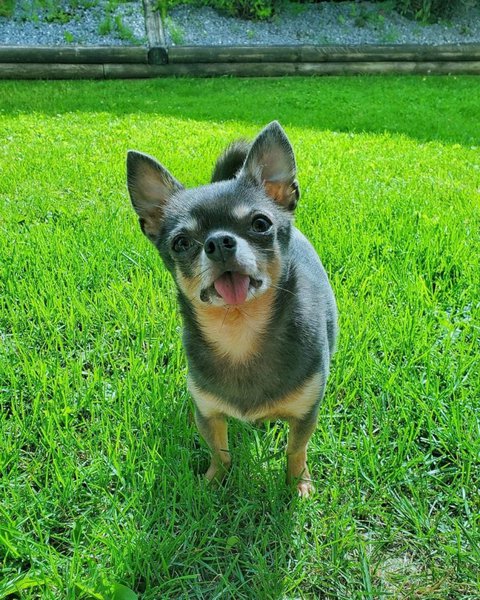
Blue & tan Chihuahuas adorn this beautiful coat thanks to the dilution gene that turns black to blue and interacts with the tan allele (at) in the Agouti locus.
The blue part of the coat may be dark or lighter in shade depending on the extent of the dilution. Just like black & tan, blue & tan coats are rare in Chihuahuas and will only come in puppies who inherit the tan-points gene from one or both parents.
23. Chocolate Chihuahua
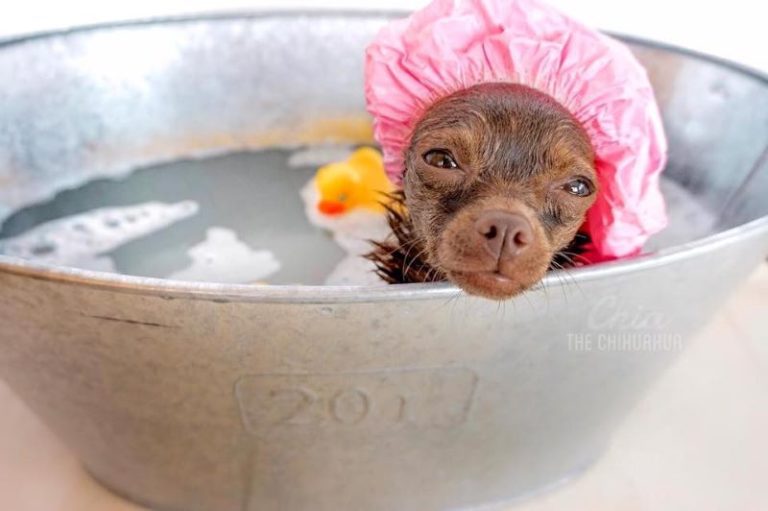
The chocolate color in dogs is caused by a mutation of the black allele (B) in the B locus, also responsible for the brown and liver colors. This mutation causes the production of brown instead of the black Eumelanin pigment.
It’s easy to confuse the chocolate coat color with liver and brown Chihuahuas. But chocolate Chihuahuas present a rather darker coat that has a deeper shade when compared to both liver and brown.
22. Chocolate & Tan Chihuahua
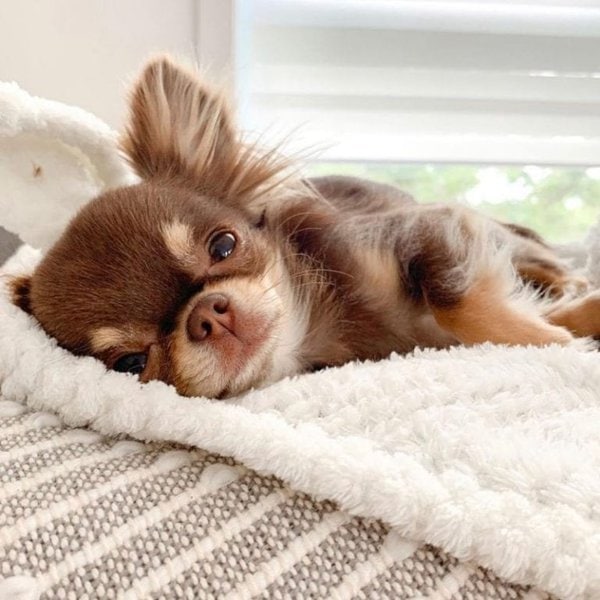
Chocolate & tan Chihuahua result from the interaction of genes in both the B and A loci. Mutations in the B locus cause the chocolate color while the tan-points allele (at) in the Agouti gene causes the expression of the tan color.
The tan points on a basic chocolate coat will give your Chihuahua a majestic look. These points are usually expressed on the feet, the muzzle, above the eyes, and on the chest as seen in the image.
21. Chocolate & White Chihuahua
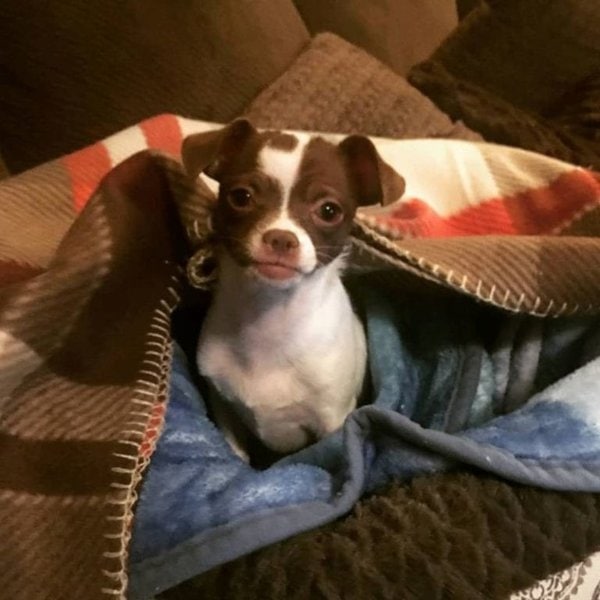
While the chocolate parts on a Chocolate & white Chihuahua are a result of the mutation in the B (Black) gene, the white markings or patches are caused by the complete absence of the pigment cells.
The white marking on a Chocolate & White Chihuahua may present as the common white stripe on the chest on a majority chocolate coat dog or take a particolored pattern as seen in the Chihuahua on the image.
20. Chocolate & Blue Chihuahua
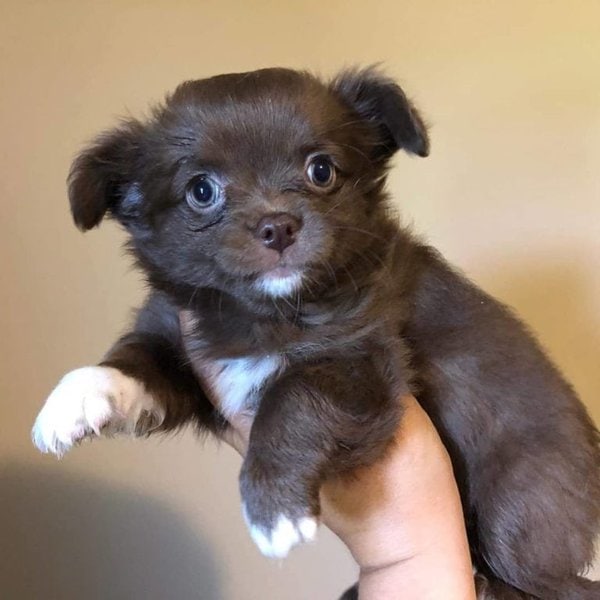
A chocolate and blue Chihuahua has a lot going on when it comes to coat color genes. As mutation in the B gene is causing the chocolate part of your Chihuahua coat, the recessive dilute gene (dd) in the D locus is lightening the brown to blue.
The blue may present on the chest, paws, and eye rims and may be deeper or lighter depending on the extent of the dilution.
19. Chocolate & Fawn Chihuahua
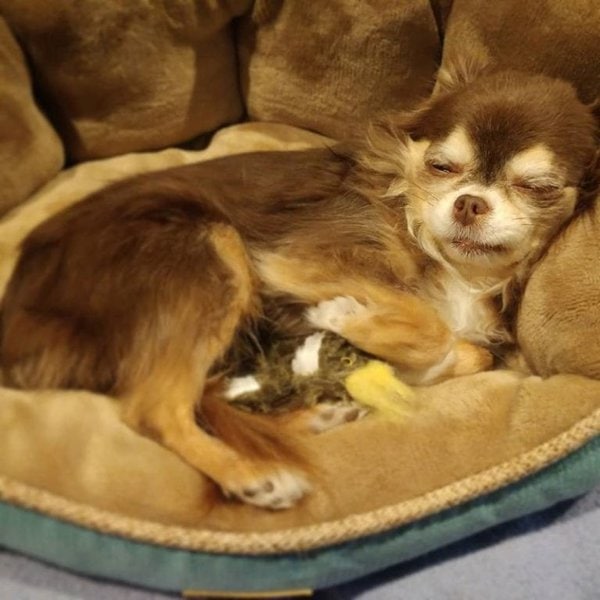
Chocolate & fawn Chihuahuas can easily be exchanged for chocolate & Tan. Whereas both tan and fawn points are caused by alleles in the Agouti locus, tan has a darker shade when compared to the light yellowish fawn.
So, a chocolate & fawn Chihuahua expresses a mutated allele of the B locus and the Ay fawn-points allele in the A locus. Fawn points/markings will normally appear on the chest and tummy, on the muzzle, and above the eyes as well as on the feet.
18. Cream Chihuahua

Cream dogs are readily exchanged for white dogs. But unlike pure white with no spotting, cream coats have a remnant of red in them. The Pheomelanin pigment which is responsible for the red color is diluted to a greater extent when it comes to cream.
According to a study on the genetics of cream coat color in dogs, all dogs with a cream coat are homozygous for the recessive red (ee) allele in the E locus. This allele is also responsible for the gold and yellow colors in some dog breeds.
17. Cream & White Chihuahua
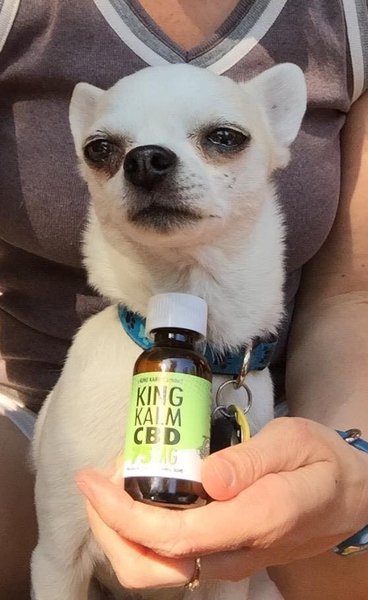
The extreme dilution of the red coat color causes the cream parts of a Cream & White coat Chihuahua. The white parts that could be on the chest, muzzle and face, and on the tummy and paws occur where no pigment cells are present.
Whereas cream and white is a rare combination, Chihuahuas with this coat variant will readily be taken for either cream or white dogs. But you can easily notice the light-yellow cream that looks like a dirty white.
16. Gold Chihuahua
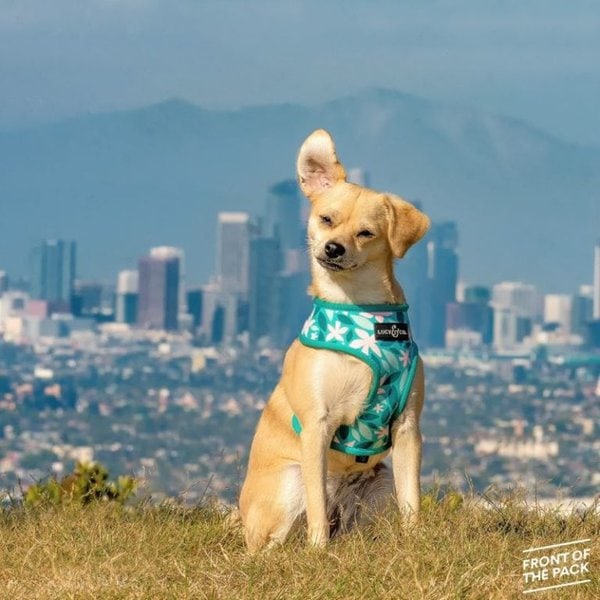
Gold is considered the middle color among the range of colors resulting from the red pheomelanin pigment while Setter red is the most intense and cream the lightest. But gene interaction can still give a gold Chihuahua coat a lighter or weightier intensity.
The nose of a gold Chihuahua can be black or liver depending on the type of Eumelanin pigment that the dog produces. If Eumelanin production is altered, your golden Chihuahua can also have a light brown (amber) nose due to diluted eumelanin.
15. Gold & White Chihuahua
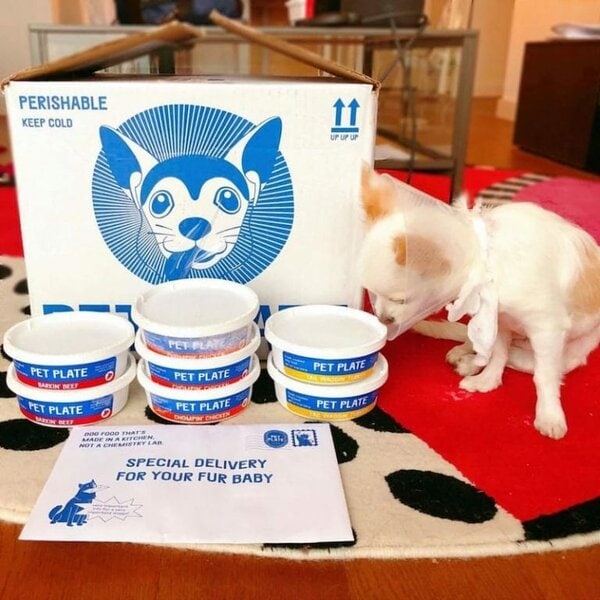
As with cream & white, gold comes as a result of the dilution of the red pigment, this time less than would be in a cream color. As always, the white part on a Gold & White Chihuahua lacks pigmentation.
Like other dog breeds, the white on a Gold & White Chihuahua can be as little as a stripe on the neck, be particolored, or have the Irish markings as seen on the featured Chihuahua.
14. Fawn Chihuahua
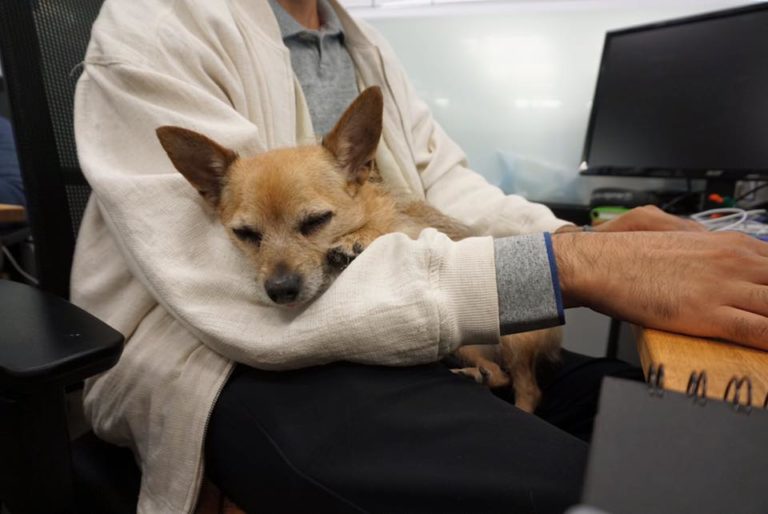
Fawn is considered the most common coat color among Chihuahuas. You should also know that the fawn color is used to unofficially describe a type of Chihuahua (‘Fawn Chihuahua’), even though the long and short (smooth) coats are the only official Chihuahua types.
As a coat color, fawn can come in a varied intensity, ranging from a darker red-yellow to a lighter cream-yellow depending on how genes allow the fawn (ay) allele to be expressed.
13. Fawn & White Chihuahua
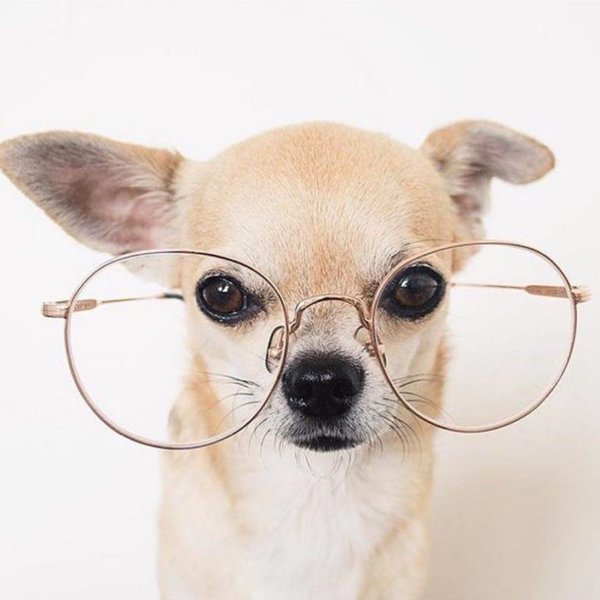
When combined with white on a Chihuahua coat, the darker shade of the fawn color will normally present on the back while white will be on the belly, chest, muzzle, face, and toes.
Fawn & white Chihuahuas are not as common as the fawn Chihuahua, but people will often close one eye to the white and consider the fawn & white Chihuahua as just a fawn Chihuahua. The nose of a fawn & white Chihuahua may be black or liver depending on gene interaction.
12. Red Chihuahua
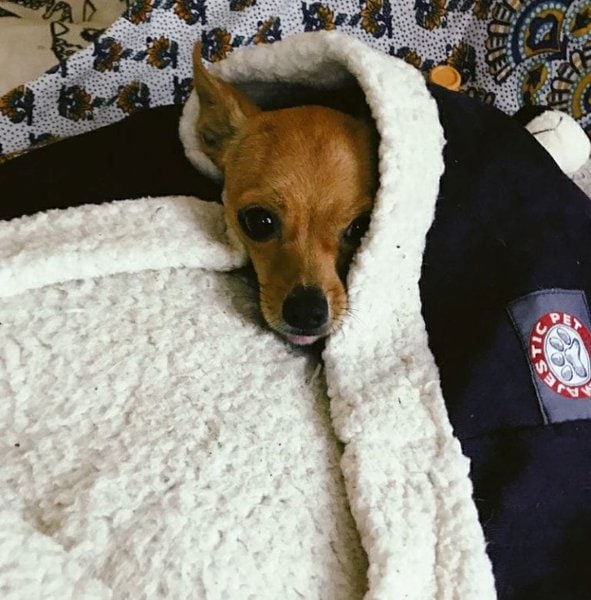
Red is among the top 5 most common coat colors among Chihuahuas. Red is the basic color produced on dog coats by the pheomelanin pigment.
Due to gene interaction, red Chihuahua coats can range from a dark-orange to a brown-orange (mahogany) shade.
Because the pheomelanin pigment only acts on coat color, red Chihuahuas usually come with a black nose, eye rims, and paws. But gene mutation can affect these points and turn them brown rather than black.
11. Red & White Chihuahua
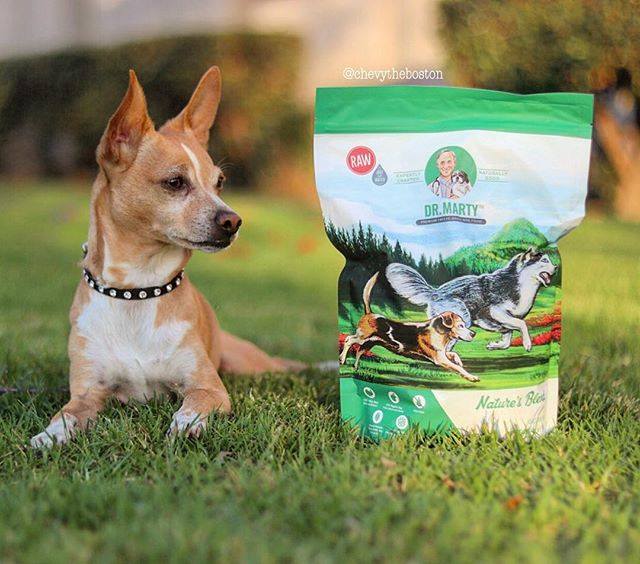
White markings on a red coat may present as a stripe on the chest or extend to other parts of your Chihuahua’s coat including the muzzle and face, the tummy and feet as in the featured Chi.
The white markings or patches result from the absence of pigmentation cells while the red parts of your pup can be darker or lighter depending on how gene interaction directs the distribution of the pheomelanin pigment.
10. Silver Chihuahua
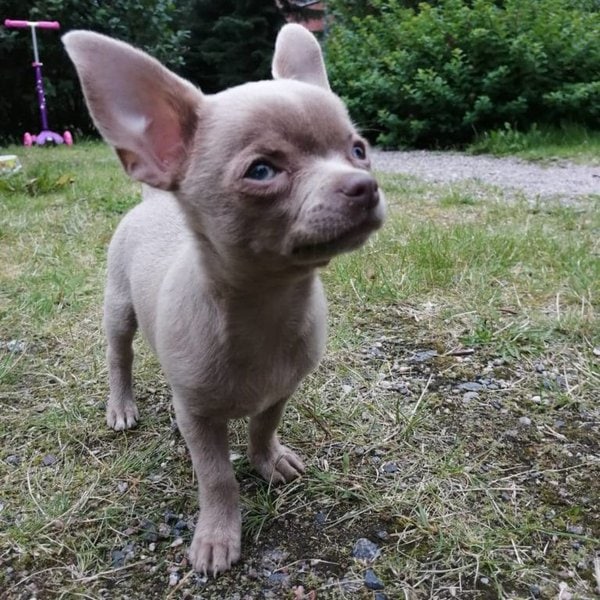
Silver Chihuahuas are homozygous for the recessive dilution (dd) gene. The action of this gene dilutes the black color beyond the blue and gray shades to cause silver, which appears like a tinge of white color is sprayed over gray hairs and making it shinier than the ordinary gray.
Because they have two copies of the recessive dilution gene, Silver Chihuahuas will always pass a copy of the gene to their puppies, making them carriers of the gene if they only get it from one parent or silver-coated if the gene is inherited from both parents.
9. Silver & Tan Chihuahua
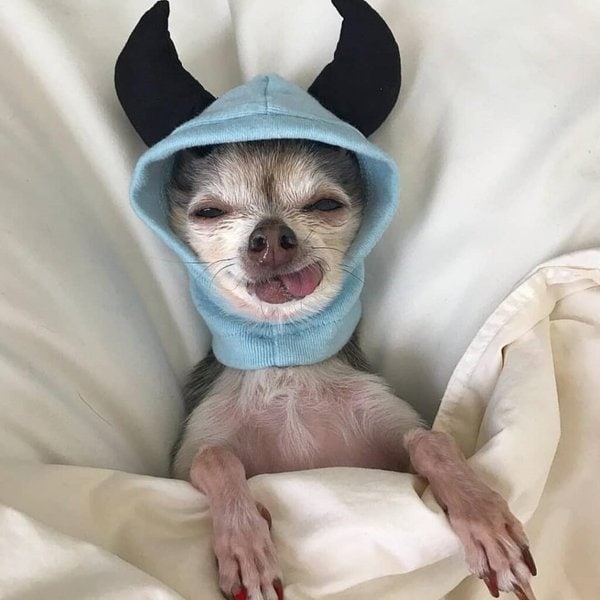
A rare combination on a Chihuahua coat that is also hard to place on the coat color scheme for most people.
Silver & Tan Chihuahuas have a lot going on when it comes to gene interaction. While the recessive dilution gene is causing black to turn silver, the tan allele (at) in the Agouti locus is deciding where to produce tan on your pup’s coat.
Remember that a dog with tan points needs a Ky allele in the K locus to allow the Agouti allele to be expressed without brindle marks.
8. White Chihuahua
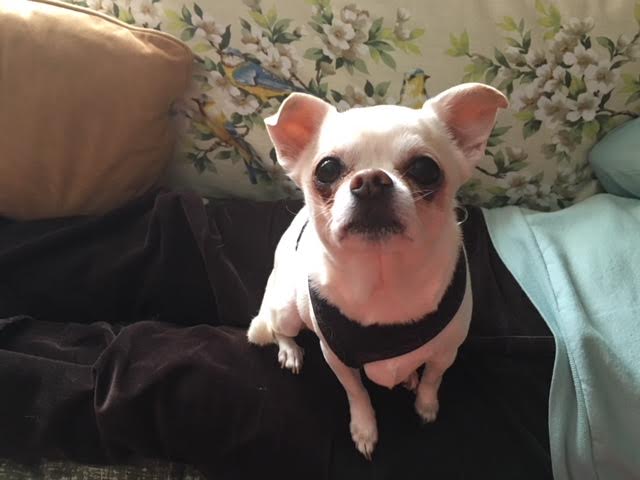
Snow white Chihuahuas are among the rarest coat variants in this breed. Their coat is actually colorless because they lack the cells that cause coat pigmentation (melanocytes).
Lack of pigmentation on white Chihuahuas only occurs on the skin and coat while Eumelanin acts on the Chihuahua’s nose, eyes, eye rims, and paws, giving them the black color.
White Chihuahuas will require more grooming attention considering their bright coat, especially if they are the long-haired type.
7. Albino Chihuahua
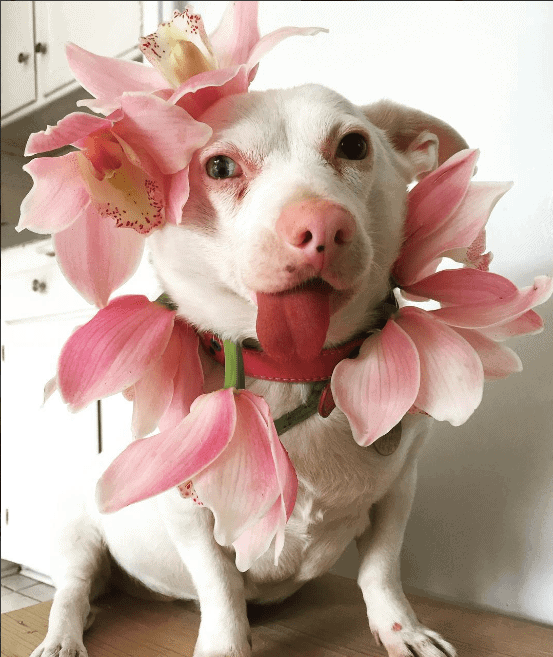
Albino dogs have a white coat because, like ordinary white dogs, they lack pigmentation on the coat.
But different from standard white dogs that have black pigmentation on the nose and eye rims, albino dogs also lack the color-producing cells on the nose and eye rims. This means that their entire skin is lacking pigment, causing their nose, eyes, eye rims, and paws to be pink.
Because they lack melanin that is also important in absorbing the sun’s radiation, albino Chihuahuas are photosensitive and should be protected from direct sunlight.
6. Tricolor Chihuahua
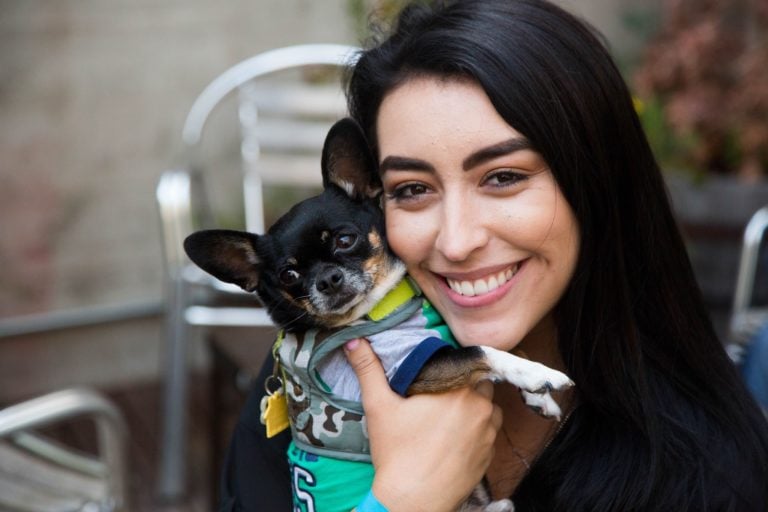
Tricolor Chihuahuas have a combination of 3 colors on their coat. A lot of the time, these colors are black, tan, & white, black, fawn, & white, or black, red, & white. But non-black coats can also present a 3-color combination such as blue, tan, & white.
Genetically, not all colors allow the expression of the second color in tricolor dogs (where white is the third color). As such, even though it might not seem so, tricolor Chihuahuas are rare. For example, in a study with 11,647 Chihuahua dogs in the UK, only 1.4% (140) were tricolor.
5. Full Body
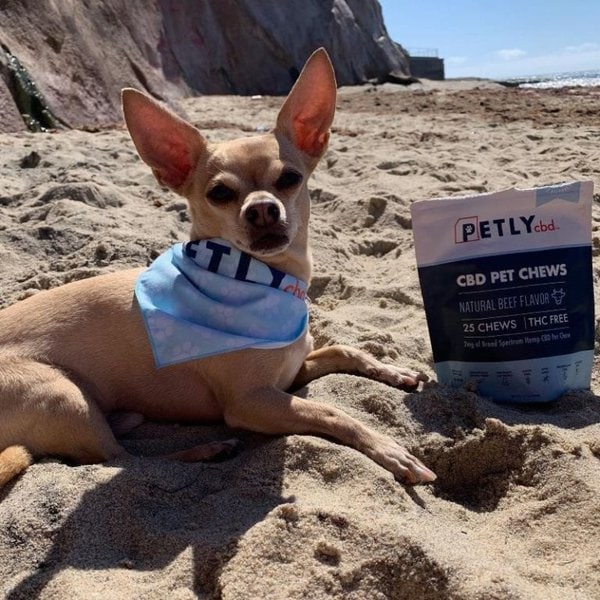
A full body Chihuahua has a single color throughout the body. This depends on the production of either the Eumelanin or the Pheomelanin pigment and their distribution throughout a dog’s coat. In full body dogs, genes direct the distribution of a single color throughout the dog’s coat.
The featured dog has an all-red coat, suggesting the distribution of the pheomelanin pigment on its coat except for the nose, eyes, and eye rims where the action of the black pigment is noticeable.
4. Spotted On White
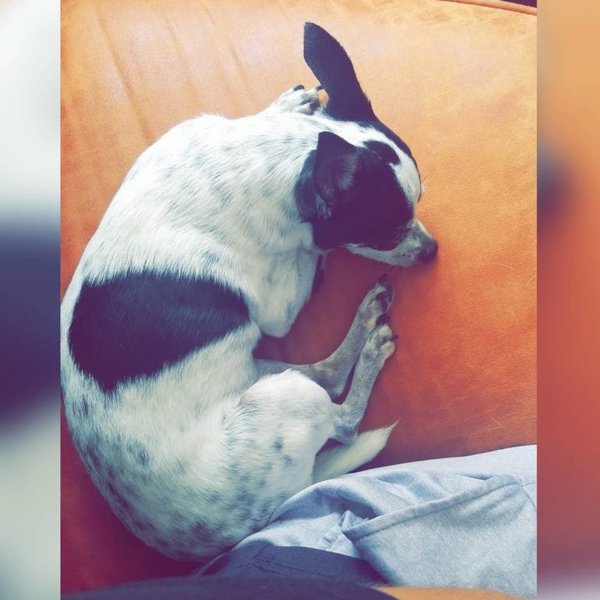
A spotted-on-white Chihuahua has spots of dark color on white areas that are thought to be caused by the white spotting series (S locus). But you will find dark spots on a white coat also described as ticking and attributed to a separate Ticking (T) gene which in its recessive form (t) causes an all-white coat.
The S gene controls the action of pigment cells on dog coats and often produces interesting and sometimes asymmetrical dog coat colors and patterns including the spotting on white, the particolor, and the piebald.
3. Brindle Chihuahua
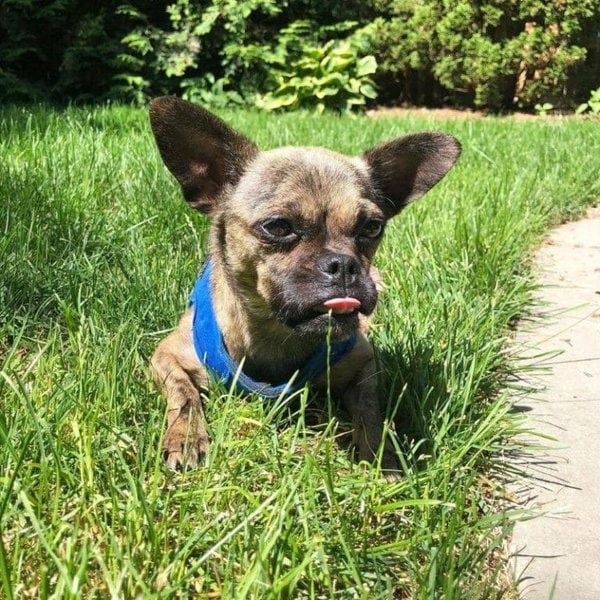
A tiny Chihuahua with a brindle coat looks more adorable than it already is. The brindle pattern that is caused by the Kbr allele in the Dominant Black (K) locus produces the ‘tiger stripes’.
To express the brindle pattern, a Chihuahua must carry a double brindle (Kbr Kbr ) allele or have a single brindle allele that is paired with the non-brindle allele (Kbr ky).
If the brindle allele is paired with the Dominant Black allele (KB Kbr) your Chihuahua will not express the brindle on its coat but can produce brindle puppies.
2. Sable Chihuahua
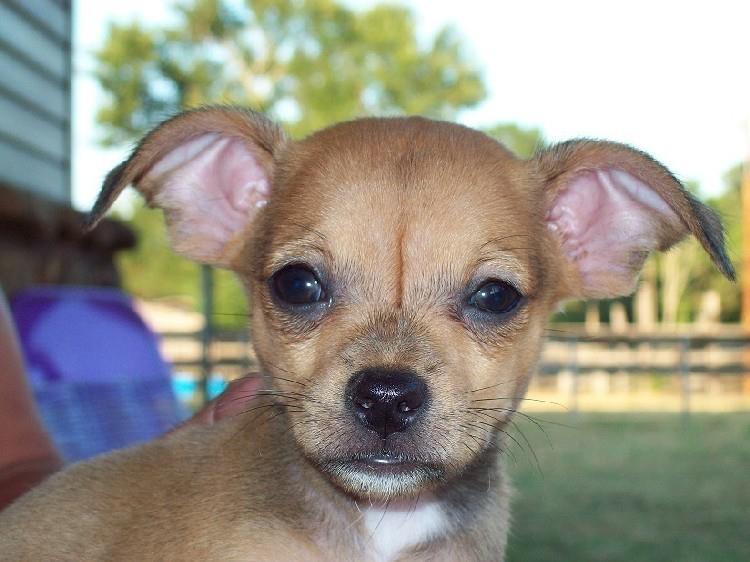
A Chihuahua with a sable coat presents a basic brighter color with a splash of black over the tips of its hairs. The basic color is usually fawn with a lighter or darker tone.
Genetically, the Agouti gene is responsible for the sable coat in dogs. The recessive ay allele which also causes fawn and dark red colors can cause a sable coat and so can the wild sable (aw) allele in the same locus.
1. Merle Chihuahua
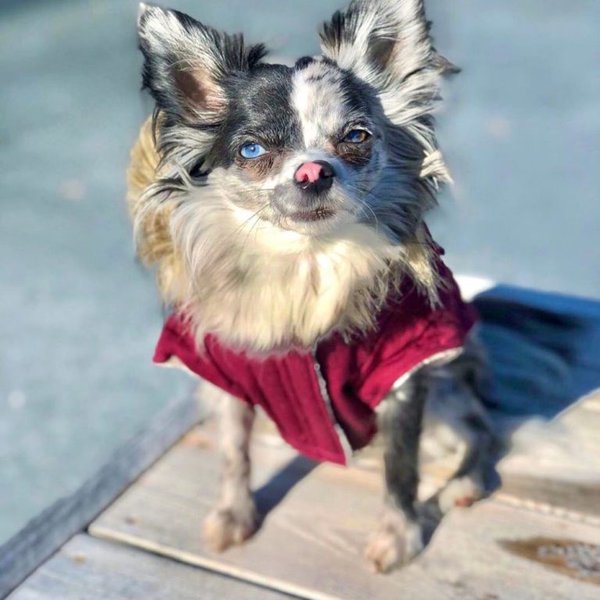
Merle is one of the rare colors of the Chihuahua. One reason for this rarity is that breeding dogs who are carriers of the merle gene only gives a 25% chance for a merle puppy. The merle gene (M) creates irregular patches of diluted color on a black coat.
The Chihuahua Club of America discourages the breeding of merle Chihuahuas because both homozygous (MM) and heterozygous (Mm) merle Chihuahuas are associated with serious health problems.
Related Questions
What Is The Rarest Color Of Chihuahuas? Snow white (all white) coats are considered the rarest among Chihuahuas. However, you might find more counts of white Chihuahuas because people will often include cream and double-colors that have white to be white Chihuahuas. Other rare colors of the Chihuahua include solid black (all black), brindle, and merle.
What Color Are Most Chihuahuas? Most Chihuahuas are fawn in color. The fawn could be darker or lighter. A study in the UK found that of the 11,647 involved in a research on clinical conditions of Chihuahuas, the majority of the Chihuahuas (58.2%) had a fawn coat. Other more common colors of the Chihuahua are red, chocolate, cream, and black (with or without markings).
How Much Is A Blue Merle Chihuahua Worth? A run through breeder prices reveals that you can pay between $700 and $7,000 for a blue merle Chihuahua. From the range of listed prices, the average price of a blue Chihuahua is around $2,448. As with all merle Chihuahuas, blue merles are rare and highly sought after and will, therefore, tend to cost more.

